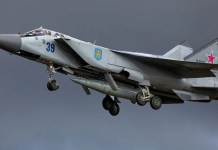As India and China have consented on five points to guide their approach to the situation on the Line of Actual Control (LAC), including the withdrawal of troops and easing of border tensions, will it mean that both sides will desist from using non-traditional weapons that were used during the Galwan Valley clash?
Indian Army Has Occupied ‘Critical Heights’ Including Finger 4 Overlooking PLA Positions – Reports
There were many media reports that stated the Chinese People’s Liberation Army (PLA) had found a loophole in the 1996 bilateral agreement between India and China, that prohibited the use of firearms by either side on the Line of Actual Control (LAC). Photos of PLA troops carrying polearms and halberds have emerged purportedly to be used against the Indian troops on the border.
The purpose of the several bilateral agreements is to maintain peace and tranquillity along the LAC. According to the 1996 agreement that was signed by the two neighbors, “neither side shall open fire, cause bio-degradation, use hazardous chemicals, conduct blast operations or hunt with guns or explosives within two kilometers from the line of actual control.”
China and India have faced border tensions for years and have also fought a short but bloody war in 1962 along the LAC.

Photos of PLA troops in Tibet carrying polearms have emerged. “In the hands of the Chinese, the ‘guan dao’ is a Chinese edged weapon, similar to a glaive or a halberd, consisting of a long shaft with a warhead in the form of a wide curved blade and weighing in the range of 2 to 5 kilograms [4 to 11 pounds],” notes Dambiev, a Russian defense site.

During the Galwan valley clash, the Chinese troops used crude weapons like clubs and sticks with nails on them to attack the Indian troops who had gone to check on the Patrol Point 14, stated media reports.
The clash resulted in 20 Indian casualties and an unconfirmed number on the Chinese side.
According to a report, PLA is recruiting mixed martial artists for its army. The report stated that the Chinese state broadcaster CCTV reported that 20 fighters from the Enbo Fight Club would be based in the Tibetan capital, Lhasa.
Tibet commander Wang Haijiang told China National Defense News that the Enbo Fight Club recruits would “greatly raise the organization and mobilization strength” of troops and their “rapid response and supportability”.
India has reportedly sent its ‘Ghatak commandos’ in response to martial arts training for the PLA. The Ghatak commandos are a specialized platoon that every infantry battalion of the Indian Army is equipped with.
Its members receive a higher level of training in armed and unarmed combat compared with regular infantry personnel. They are trained to lead assaults and are considered the ‘tip’ of the spear of an infantry battalion.
As tensions run high on the border, despite the disengagement process that is underway, both sides have deployed their most advanced weapons along the LAC. However, both the countries are aware that using these combat hardware would result in the other retaliating with its own advanced weapons further escalating the issue.
“Despite much posturing and finger-pointing, neither China nor India – both nuclear-armed powers – are eager for war which suggests that the firearms-free border zone will continue for now, though that doesn’t mean violence-free,” wrote Micheal Peck of Forbes.





